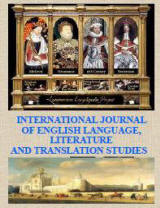Caught in the Web of
Corruption: The Tribal Experience in Gopinath Mohanty’s
‘Paraja’
Dr. Sudesh M. B. Bhowate
ABSTRACT
Gopinath Mohanty’s Paraja is a
seminal tribal novel centered on the Paraja community of Odisha.
Through the narrative of Sukru Jani and his children, the novel
portrays the harsh realities and persistent hardships of tribal
life. Their vulnerability, driven by illiteracy and
subsistence-level living, makes them easy targets for exploitation
by corrupt public officials and institutions operating in tribal
regions. Rich in ethnographic detail, the novel captures the
cultural practices and traditions of Odisha's tribal communities,
while also exposing their systematic socio-economic marginalization.
At its core, Paraja chronicles Sukru’s struggle not only as an
individual but also as a representative figure of the tribal
populace whose family is eventually reduced to bonded labor (goti)
under a local moneylender, or Sahukar. The novel unravels the role
of a deeply flawed and complicit public machinery including the
village headman, forest and revenue officers, and court officials in
orchestrating Sukru’s downfall. It also highlights the involvement
of private actors like the Sahukar, who, with the aid of forged
legal documents and the support of corrupt officials, dispossess
tribal families of their land and autonomy.
Further, the novel sheds light
on the exploitation of tribal women, who are often subjected to
patriarchal abuse by figures such as the Sahukar and supervisors of
road construction projects. Within this oppressive nexus of public
corruption and private greed, there is little hope for recovery or
justice for Sukru and his family. Paraja raises critical questions
about the systemic entrapment of tribal communities and their
exploitation within state and institutional frameworks. Using the
lens of the sociological theory of corruption, this research paper
seeks to examine the interplay between corrupt public institutions
and the victimization of tribal people as portrayed in the novel.
Key words: Tribal, exploitation, Goti (bonded laboour), culture, Sahukar, poverty, oppression, marginality, Justice,




